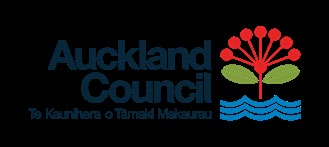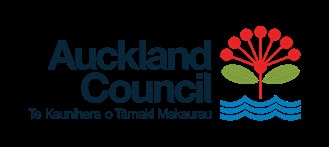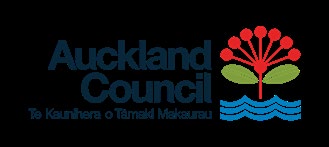 Memorandum
Memorandum
17 November 2022
To:
Mayor Wayne Brown
Subject:
Telecommunications Infrastructure: Triggers for Auckland Council and
Auckland Transport Approvals
From:
Ian Smallburn, General Manager, Resource Consents
CC:
Craig Hobbs, Director Regulatory Services
Contact information:
[email address]
1. Purpose
To provide information on:
• The national and local regulatory framework that manages the installation and operation
of telecommunication infrastructure.
• Other support currently provided to telecommunication companies by Auckland Council
(AC).
2. Summary
2.1. Telecommunication activities are largely managed by
The National Environmental
Standards for Telecommunication Facilities, 2016 (NES:TF).
2.2. AC and ATs primary function relating to telecommunications is to consider approvals for
the construction and operation of telecommunication infrastructure under the Resource
Management Act (RMA), Building Act 2004 (BA), or to provide approvals as a road
controlling authority or as an owner of public land or buildings.
2.3. Where telecommunication companies comply with the NES:TF, no resource consent is
required (i.e., it is a permitted activity). Many telecommunication activities within the road
corridor are permit ed activities. Resource consents are required where they trigger a rule
in the Auckland Unitary Plan (AUP). 27% of RMA approvals applied for by
telecommunication companies are for resource consent. 73% of approvals are for a
Certificate of Compliance (CoC) for permit ed activities. Average statutory processing
days for RMA approvals is 21 statutory days (2019-2022 period).
2.4. Where telecommunication infrastructure consists of a standalone structure, or is installed
on streetlights, the work is exempt from the need to obtain building consent.
2.5. Landowner Approval from Auckland Council may be required for telecommunication
infrastructure on publicly owned land or buildings.
2.6. Telecommunication companies need to apply to AT for a “Telco Act Notice” to mount
antenna on a streetlight. A Corridor Access Request (CAR) is required from AT for works
in a road corridor.
2.7. The Regulatory Directorate provides ‘Key Account’ support to Two Degrees, Spark and
One (Vodafone) providing a single point of contact to help navigate the required regulatory
approvals.
Page 1
 3. Discussion
National framework
3. Discussion
National framework
3.1. The National Environmental Standards for Telecommunication Facilities (NES:TF) was
introduced in 2016. The NES:TF provides:
• national consistency in the rules managing the installation and operation of
telecommunication infrastructure across New Zealand, whilst ensuring the effects on
the environment are minimized and managed appropriately, and
• rules that allow network operators to install a wide range of low impact
telecommunications infrastructure such as cell phone towers, antenna,
telecommunication lines and associated cabinets in public road reserve, private land,
urban and rural areas and on buildings without the need to apply for resource consent
(provided they meet the NES:TF permitted standards and comply with the Auckland
Council Unitary Plan).
3.2. Where a proposal is not a permit ed activity under the NES:TF, then resource consent is
required.
Local regulatory framework
Resource Management Act (RMA) approvals
3.3. If the NES:TF standards are met and restrictions complied with, telecommunication
providers can install infrastructure without a resource consent. Where standards are met,
telecommunication providers can apply to AC for a “Certificate of Compliance” (CoC) under
s139 of the RMA (noting this is not mandatory requirement). Al CoC applications are
processed by the AC streamline resource consent team which aims to achieve a 10-working
day statutory processing timeframe. Over the 2020-2022 three-year period approximately
73% (or 171) of RMA approvals applied for by Two Degrees, One (Vodafone) and Spark
were CoCs for permit ed activities under the NS:TF.
3.4. Where a proposal is not a permitted activity under the NES:TF, then a resource consent is
required. Over the 2020-2022 three-year period, approximately 27% (or 55) of RMA
approvals applied for by Two Degrees, One (Vodafone) and Spark were for land use
resource consents.
3.5. Over the 2019-2022 period, the average statutory processing days for RMA approvals is 21
statutory days.
3.6. The majority of resource consent approvals required tend to be where there is an increase
in height or width of poles, or antennas above that permit ed by the NES: TF.
Telecommunication infrastructure that is proposed to be in a more sensitive areas also
require resource consent. Triggers may include:
• Historic heritage values
• Landscape features identified as having special visual amenity values, outstanding
natural landscapes or features
• Significant habitat for indigenous vegetation or fauna
• Rules to protect the adjoining coastal marine area.
• Work within the dripline of a tree or other vegetation in the road reserve, or work within
the dripline of a tree, group of trees, or other vegetation identified as of special
significance
Page 2

3.7. It should be noted that AT supports AC’s regulatory role in RMA applications. Utilities are
generally permitted in the road corridor in the Unitary Plan, however, in terms of subdivision
applications which propose to vest new public roads, AT wil assess the proposed street
design to ensure that there is sufficient space in the road corridor for the provision of
infrastructure such as utilities. The Auckland Code of Practice for Land Development and
Subdivision, (Chapter 3 Transport) and associated Transport Design Manual outlines
relevant standards.
Building Consent approvals
3.8. Where telecommunication infrastructure consists of a standalone structure or is installed on
streetlights, the work is exempt from the need to obtain building consent (Refer Exemption
29 under Schedule 1 of the Building Act 2004).
3.9. If telecommunication infrastructure is installed on an existing building and it has an impact
on the structural or weatherproof performance of the building, a building consent may be
required.
Auckland Transport (AT) approvals
3.10. For antenna that are to be mounted on an existing AT streetlight, telecommunication
firms submit a “Telco Act Notice” to the AT lighting team.
3.11. A Corridor Access Request (CAR) is required for installation work that needs to occur
within the road corridor (including installation of antenna on streetlights).
3.12. An encroachment approval is required if there were no statutory rights for the proposed
telecommunications infrastructure to be in the road corridor (noting this is rarely required).
3.13. AT is required to review and approve applications within 15 working days, as per the
legislative requirements. If there are urgent requests, these can be prioritised.
3.14. AT works to find solutions with providers in relation to road controlling authority approvals
and the access of telecommunications providers wherever possible.
Telecommunication infrastructure on publicly owned land or buildings
3.15. If a telecommunication provider wishes to instal telecommunications equipment on
public land or buildings, Landowner Approval (LOA) is required (in addition to any resource
or building consent approval). Landowner Approvals for:
• Work in a reserve, park or public open space would be sought through Parks and
Community Facilities and approved by the relevant Local Board (or by officer
delegation); or
• Installation of telecommunication infrastructure on a building owned by Auckland
Council would require landowner approval from Auckland Council Property, Customer
& Community Services, Eke Panuku or that part of Council responsible for the
management or operation of the asset.
Other approvals
3.16. There are no additional Bylaws adopted by Auckland Council that manage or control the
installation and operation of telecommunications infrastructure.
Page 3
 Other Support
Other Support
3.17. The AC Regulatory Directorate provides a Key Account service to support Two Degrees,
Spark and One (Vodafone). Through the Key Account programme additional support is
provided to these companies to assist them with any regulatory approval requirements. This
includes understanding their work programmes and resourcing requirements, through to
interpretations and “unblocking” applications, if required.
3.18. The Resource Consent Department also regularly receives and responds to complaints
from members of the public about concerns of the installation of facilities in their
neighbourhood.
4. Next steps
This memo is for information purposes. If you have any other questions, please feel free to
contact Ian Smallburn, General Manager, Resource Consents.
Page 4
Document Outline



